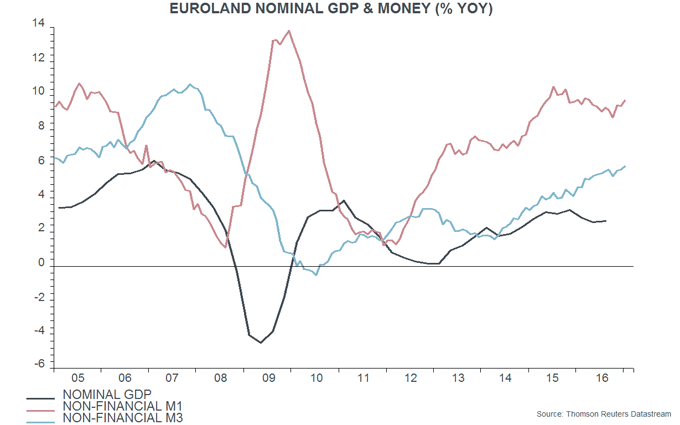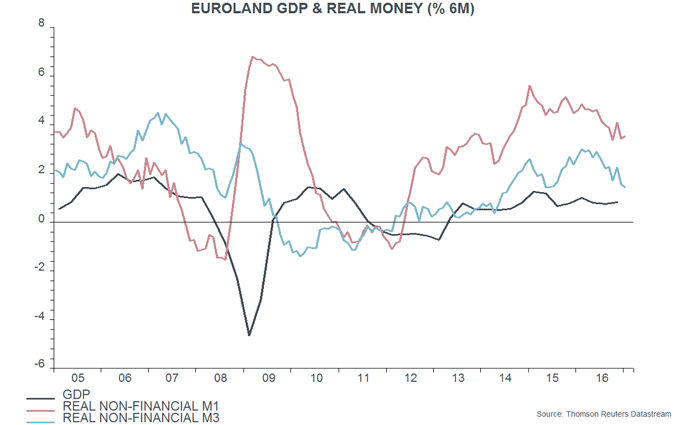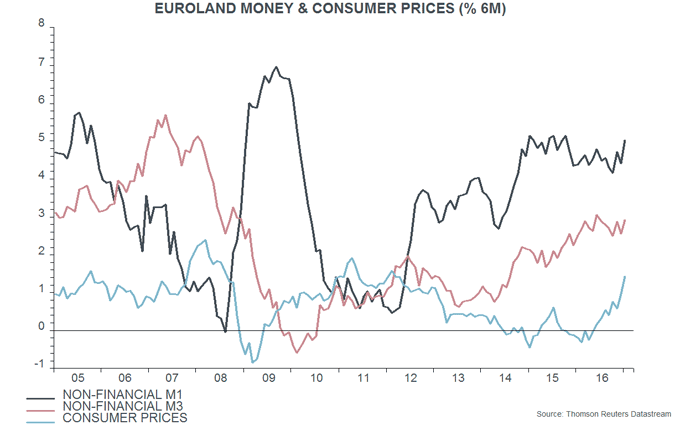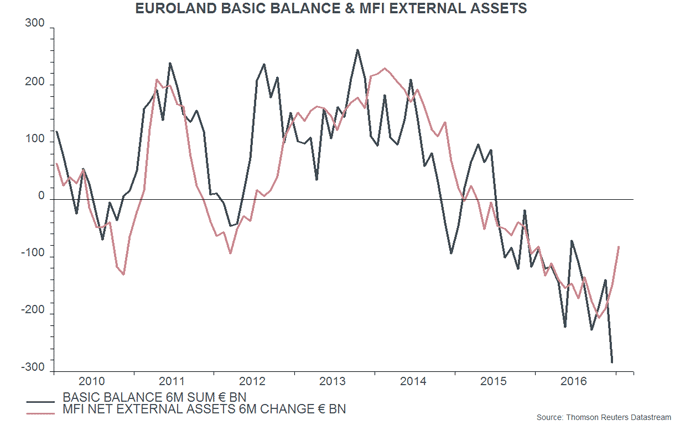Eurozone money trends suggesting stable growth, rising inflation
Eurozone economic news remains solid – the Markit composite PMI output index, for example, reached its highest level since 2011 in February, moving above the corresponding US index. Robust economic performance was predicted by monetary trends last year (e.g. here). Nominal money growth remains strong but rising inflation has moderated real expansion. Current trends suggest that economic growth will continue at a respectable pace while “core” inflation will follow headline inflation higher later in 2017.
The preferred narrow and broad monetary aggregates here are non-financial M1 and M3, comprising money held by households and non-financial corporations – the headline M1 / M3 measures additionally include financial corporations’ holdings but these contain little information about near-term economic prospects. Annual growth of non-financial M1 rose to 9.7% in January, a nine-month high, while growth of non-financial M3 reached 5.9%, the highest since 2008. The recent increases suggest that annual growth of nominal GDP will pick up during 2017 – see first chart.
The preferred monetary measure here for forecasting fluctuations in economic activity is the six-month rate of change of real (i.e. consumer-price-deflated) non-financial M1. This has moderated since the first half of 2016 but remains solid by historical standards and was little changed in January – second chart. The slowdown in recent months has been entirely due to rising inflation, with six-month nominal growth moving higher – third chart.

Six-month real non-financial M1 growth is around the middle of its range over the past three years, a period during which GDP expansion has averaged 1.7% per annum – a reasonable expectation for the pace of growth over the next two to three quarters. Such growth would be above “potential” economic expansion estimated by the EU Commission, IMF and OECD at 1.0-1.2% in 2017, implying a further fall in unemployment.
Rising nominal money growth, meanwhile, suggests that stable real economic expansion will be accompanied by higher inflation, as measured by the GDP deflator – the broadest measure of domestic prices. Faster growth in the GDP deflator would be expected to be associated with a rise in “core” consumer price inflation (i.e. excluding energy, food, alcohol and tobacco) – fourth chart.
A recent post noted that the euro exchange rate was depressed in 2016 by a record outflow of direct and portfolio investment – this outflow swamped a rising current account surplus, resulting in a large “basic balance” deficit. The post suggested that the outflow would slow in 2017, partly reflecting QE “tapering”, supporting the euro. This slowdown may have begun, judging from data on the net external asset position of monetary financial institutions (MFIs): the change in such assets mirrors the basic balance and the decline in the six months to January was the smallest for a year – fifth chart.

Reader Comments